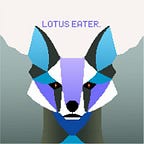NFTs Go Omnichain With Tokenbound and LayerZero
LayerZero and Tokenbound
Tokenbound, a development tool for ERC-6551, has announced plans to expand its services across multiple blockchain networks with its V3 and V4 releases. By using LayerZero V2, Tokenbound will connect to 50 different blockchains, making it easier to manage NFT accounts and identities everywhere.
The newly launched V3 lets users send transactions from an NFT’s home chain to any other chain supported by LayerZero. The upcoming V4 will allow transactions on any chain to any chain, aiming to provide a global experience for NFT users. V4 is set to launch in mid-2024.
Welcome to the future of NFTs…
All the chains. Any transaction type. One NFT.
What is Tokenbound and ERC-6551?
Imagine your PFP had a wallet; a PUNK that stakes 69 ETH in Lido or an Azuki that holds a Fidenza and a Pudgy. Now imagine that wallet was omnichain; a CryptoKitties minted on Ethereum that can execute transactions on Optimism or an Axie that can claim an airdrop on Arbitrum and sell it on Polygon.
Enter Tokenbound — the project behind ERC-6551 that is leveraging the power of LayerZero to bring NFTs on all chains.
Tokenbound is an open-source toolkit for developers to easily integrate ERC-6551 (TBAs) into applications. Tokenbound provides a reference implementation, a front-end SDK, and an account explorer UI to easily interact with TBAs for your NFTs.
ERC-6551 is an Ethereum Improvement Proposal. It enables NFTs like ERC-721 and ERC-1155 to function like normal Ethereum addresses — meaning the NFT has the right to send, receive, and custody assets. In the simplest terms possible, 6551 transforms an NFT into a smart contract account.
This is accomplished by assigning an Ethereum account to all non-fungible tokens, creating what is called a “Token Bound Account” (TBA) that allows an NFT to own assets and interact with other applications. Overall, 6551 gives NFTs the same rights as an Ethereum user.
Notably, every NFT you own or will own — be it 721 or 1155 — is compatible with ERC-6551 and is also fully backward compatible.
Why Should You Be Excited About Tokenbound and LayerZero?
Imbibing agency into NFT ownership unlocks a new layered experience for NFT holders and creators. Imagine on-chain avatars that can automatically collect and maintain in-game assets within its own inventory, domain names that can own profile-adjacent information, portfolios of assets that can be traded as bundles (like miniature ETFs), NPC/AI agents that interact with players of web3 games or transact in DeFi applications, or an NFT on mainnet that posts on Lens.
Single-chain ERC-6551 is powerful in its own right. However, in the multi-chain world, a gaming asset that can only touch or receive assets on one chain is limited.
For example, the first iteration of Tokenbound’s ERC-6551 implementation was launched in May 2023 and all transactions were siloed to the chain an NFT was minted on — be it Ethereum, Polygon, etc. By October 2023, Tokenbound added additional multi-chain functionality to enable transactions to be sent from Ethereum to an external destination chain. With V3 and V4, Tokenbound’s ERC-6551 product is fully omnichain.
By combining the textured experience of ERC-6551 with the composability of LayerZero, an NFT transforms from object to subject — to an active agent rather than a passive asset. In real life, you own outfits purchased from different stores — in crypto, your PFP may own outfits purchased from different L2s. Web3 games could continually drop tokens and upgrades to the same NFT, no matter where the NFT is housed. In essence, a single NFT housed on a single chain can be viewed as an aggregator of identity, while also controlling assets and transacting across 50+ chains.
This experience is entirely permissionless and transparent, two characteristics that are quite important to LayerZero. Any project may utilize ERC-6551 via Tokenbound — be it an NFT project launching a collection of tokens or an NFT marketplace looking to create a wallet experience differentiated from the MetaMask, Rabby, and Coinbase Wallets of the world. Furthermore, Tokenbound doesn’t require permission from project owners, no wrappers are necessary — every ERC-721 and ERC-1155 can start using ERC-6551 immediately, as explained in the Tokenbound docs.
Conclusion
These sorts of developments and partnerships are crucial for the long-term mass adoption of this industry.
Now, instead of asking someone to “set up a wallet,” the user flow is to “purchase a PFP that you think looks cool.” That NFT, thanks to ERC 6551, can be someone’s first web3 identity, abstracting the wallet and chain experience from new market entrants. And for power users, a TBA is a great way to consolidate information into a single place. An NFT can now be a wallet that you own that can interact with any chain without reliance on any third-party wallet service.
For developers, Tokenbound is a tool that streamlines the process of integrating ERC-6551. Tokenbound provides an SDK, account explorer UI, and other tools directly on its website, making it easy to embed into existing collections, dApps, marketplaces, and wallets.
For more information on Tokenbound and its plans for ERC-6551, check out their website.
About LayerZero
LayerZero is a permissionless, censorship-resistant, and immutable protocol that connects blockchains. Using LayerZero, developers can send and compose arbitrary messages across chains while preserving full control over their application’s security.
Contact
To learn more about LayerZero in general, check out the website. For additional information, the LayerZero Labs team is available to answer general questions on Discord and Telegram. You can also follow LayerZero Labs on X to receive the most up-to-date information.
